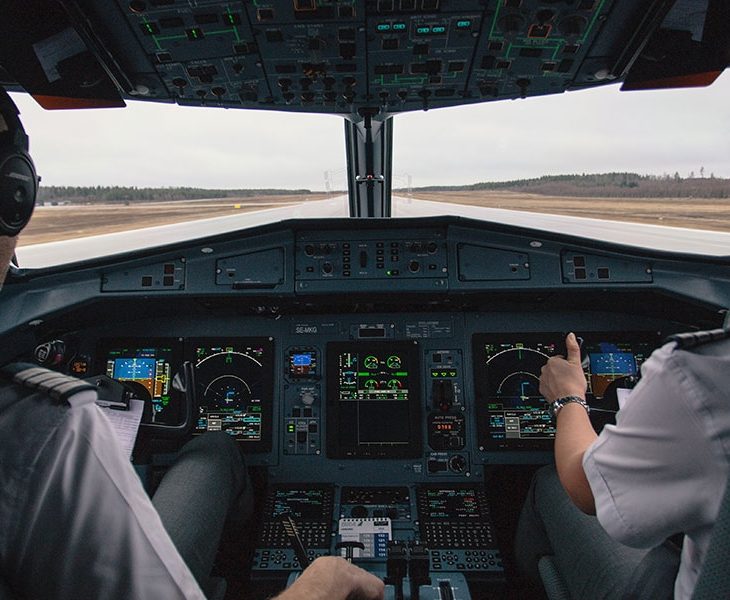Interfaith in the Cockpit
May 15, 2020

Interfaith leadership formation is a safety issue.
Not only is it a matter of personal safety (as those who have faced harassment know all too well), but for pilots it is also a professional responsibility.
As someone who still has a hard time believing that planes can fly (they are far too heavy), I am amazed at the professional training our student pilots receive at Embry-Riddle Aeronautical University. In addition to all the technical details and required skills, they also learn extensive safety procedures. Indeed, the aviation industry reminds people regularly about how safe it is to fly, and this excellent safety record is a direct result of forming student pilots in a pervasive safety culture.
Hence, as we began to explore interfaith leadership education on our campus, students, faculty, and staff of our College of Aviation immediately framed our conversations as a safety issue. Two issues emerged as central for their professional, interfaith, worldview – communications between crew members and having responsibility for everyone in the airplane regardless of their backgrounds and beliefs.
Pilots realize that clear communication is essential. Students learn to use precise, efficient technical language to establish clarity about their location, status, etc. If a problem exists, they cannot afford to lose time trying to convey essential information (indeed, professional standards reduce the likelihood of problems happening). Studies of previous crashes have revealed situations when a co-pilot did not speak up and share necessary information or recommendations to the pilot due to personal issues. Pilots themselves have memories of when they felt uncomfortable with someone else in the cockpit, and they recognized their own struggle to work professionally with someone with interpersonal biases. A crew member whose statements, smirks or glances make it harder for others to communicate is a safety risk.
Good leaders set an inclusive tone for every flight. At a recent National Gay Pilots Association meeting, one pilot shared her regular pre-flight crew briefing that emphasized her need to hear about anything that was disrespectful about another crew member or passenger. She recognizes that a breakdown in communication could lead to a mistake, and at 35,000 feet mistakes are multiplied 35,000 times.
Pilots accept responsibility for everyone on the airplane, and they recognize, particularly in a post 9/11 world, that appearances, beliefs and practices raise questions of safety. “Suspicious looking” people raise alarms in the minds of passengers and crew. One pilot on our faculty shared the story of a nervous flight attendant who called to the cockpit to describe an older man behaving strangely. He was rocking back and forth in his seat and repeating something in a foreign language. Over the course of the conversation, the pilot helped the attendant to see that this was not a terrorist but an Orthodox Jew praying. News reports and lawsuits indicate that pilots and crew sometimes do evict passengers for their appearances, and airlines know that further training is necessary. Airlines recognize that they have a particular investment in respecting the complexities of human diversity.
When you fly on Delta, American or other carriers, in addition to choosing vegetarian or vegan meal options, you can also choose a kosher, halal or a Hindu meal. As we remind our students, this is a metaphor for how the aviation industry understands itself in interfaith terms. Airlines want customers, and customers come from all different backgrounds. And airlines certainly realize that they assume responsibility for everyone on their airplanes, regardless of their worldview. They must find ways to respect the individual needs of passengers while also maintaining standards for all. Our students entering the aviation industry – not just our pilots – are coming to appreciate the ways in which their future sector requires that they develop interfaith skills.
To what extent is interfaith work a professional safety issue for everyone, not just pilots?
Can we see aviation education as a metaphor for – or microcosm of – the work of interfaith education as a whole? In pressurized cabins at altitude, it is easy to see the ways in which working together with people who orient around religion differently is a matter of safety. But in our own contexts, too, we often find ourselves responsible for diverse groups of stressed people, people who feel confined, possibly sitting next to strangers who may be out to get the armrest or another coveted prize. If we crash and burn as leaders, persons may not die, but parts of them might.
On the other hand, in addition to safe spaces, we need brave spaces, places where we can take on the complex educational risks of revealing selves and receiving others. Aviation education’s focus on professionalism sets boundaries to what should be discussed in the cockpit. Professional communication is not always the same as interfaith communication.
That said, the very act of flying from Point A to Point B presupposes that it is a good thing for the peoples of both Point A and B to be together in the first place. And everyone traveling together – both literally and metaphorically – has a common interest in arriving in one piece, even if there are moments of turbulence along the way. Just remember to put on your own oxygen mask first before assisting others.
Share
Related Articles



